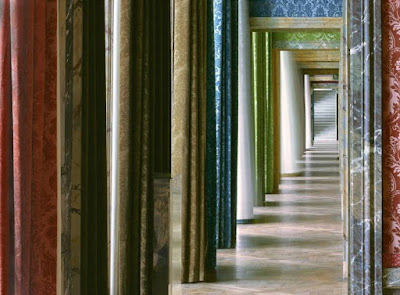Marie-Antoinette and the secret of the Anakis
Pompei
The 18 th century is the time when Pompei is identifyied. Searches and discoveries have been done in Herculanum.
lava tubes
Francis I, Holly emperor (Marie-Antoinette's father)
Francis I (1708 – 1765) . With his wife, Maria Theresa, he was the founder of the Hasburg-Lorraine dynasty.
Maria Theresa and Francis I had sixteen children, amongst them the last prerevolutionary queen consort of France, their youngest daughter, Marie-Antoinette (1755–1793).
In 1736 or 1737, he and Marie-Thérèse (his wife) spent 3 months in the Grand Duchy Tuscany (Italy).
Marie-Antoinette’s father (Francis 1st) was a scientist. He imagined and registered patents. He was also surrounded by other scientists.
Marie-Antoinette was her favorite child.
Francis 1st was a freemason.
Marie-Antoinette’s father (Francis 1st) was a scientist. He imagined and registered patents. He was also surrounded by other scientists.
Marie-Antoinette was her favorite child.
Francis 1st was a freemason.
He died suddenly in his carriage while returning from the opera at Innsbruck on 18 August 1765.
Mme De Lamballe
Princess Marie Thérèse de Lamballe (1749-1792) was a faithful friend to the Marie-Antoinette and remained with her to the end. She was devout and never displayed the greedy nature of so many at the court. Nevertheless, she became a symbol of the rottenness of the Ancien Régime. She was killed by a mob during the September 1792 massacres. Her head was displayed on a pike under the queen’s windows.
Count of Artois
Artois was born October 9, 1757 at the Palace of Versailles. He was a member of the House of Bourbon and the grandson of King Louis XV. With his father and three older brothers ahead of him in line for the throne, no one expected Artois would ever be king. He received no formal education and led an idle and undisciplined life at court. When his grandfather died in 1774 (his father and eldest brother having already passed away), Artois’s brother became King Louis XVI.
The Don Juan of Versailles
The Count of Artois was said to be handsome, charming, generous and impulsive. He was a horseman, a gambler and a playboy – the “Don Juan” of Versailles. (1) Artois was a close friend of Louis XVI’s wife, Marie Antoinette. The two of them indulged in expensive frivolities, like the construction of the Château de Bagatelle. Their activities highlighted the gulf between the royal family and ordinary French people, and added to the unrest that sparked the French Revolution.
Zamor
Zamor (christened Louis-Benoit) (b. 1762? - d. 7 February 1820) was a French revolutionary of Bengali origin, who, as a boy of eleven, was taken from Chittagong, Bengal Subah, Mughul Empire (today's Bangladesh) by slave traders.
Later he was educated by Countess du Barry and became her servant, but he betrayed her to the Committee of Public Safety. He participated in the French Revolution and was imprisoned by the Girondins.
Early life and upbringing
Zamor was born in the town of Chittagong in the state of Bengal (now Bangladesh).
In 1773, when he was eleven years old, he was captured by British slave traders, who trafficked him into France via Madagascar and sold him to Louis XV of France.
The King gave the young boy to his mistress, Countess du Barry, and he was christened Louis-Benoit. The Countess developed a liking for the boy and educated him. Zamor developed a taste for literature and was inspired by the works of Rousseau. Till her death, the Countess was under the wrong impression that Zamor was African.
Records of the period suggest that Zamor may have been extremely mischievous as a child. She noted in her memoirs:
The second object of my regard was Zamor, a young African boy, full of intelligence and mischief; simple and independent in his nature, yet wild as his country.
Zamor fancied himself the equal of all he met, scarcely deigning to acknowledge the king himself as his superior.
Axel Von Fersen: Marie-Antoinette's friend

Historians and biographers debate whether Marie Antoinette and Axel von Fersen were platonic friends or lovers. Only Marie Antoinette and Axel von Ferson know the truth, but the strength of their affection for each other resonates in their letters and the way they impacted each other’s lives.
Marie Antoinette and Swedish soldier Hans Axel Von Fersen were both still teenagers when they met each other at a masquerade ball in Paris on January 30, 1771. She was still the Dauphine and not yet the queen and Fersen’s military career had just begun. Born in 1755, he was part of the Swedish nobility, but served in the Army of France.
At the ball, Marie Antoinette and Axel von Fersen took off their masks and talked to each other and that meeting began their friendship. She invited Axel von Fersen to Versailles and he quickly became one of her favorite guests. He traveled to Versailles as often as he could, but his military career soon transformed into a diplomatic post that took him to England for several years.
The Abbe de Vermont: Marie-Antoinette's Tutor
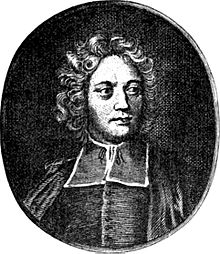
Abbe de Vermond was Marie-Antoinette former tutor in Austria.
He accompanied her to France as her reader, tried to make Marie follow the counsel sent by her mother.
Maria Theresa, Marie-Antoinette's mother (1717-1780)
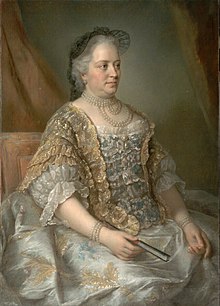
Maria
Theresa Walburga Amalia Christina was the only
female ruler of the Habsburg
dominions and the last of the House of
Habsburg. She was the sovereign ofAustria, Hungary, Croatia, Bohemia, Mantua, Milan, Lodomeria and Galicia, theAustrian Netherlands and Parma. By marriage, she
was Duchess of Lorraine,Grand Duchess of Tuscany and Holy Roman Empress.
All of Maria Theresa's
children were subject to her emotional blackmail. She would be solicitous to
the point of smothering, and then demand total obedience as just recompense for
her care and toil.
Maria Theresa was perfectly prepared to
destroy Marie Antoinette's happiness if it increased Austria's
strength.
Madame Du Barry
Jeanne Bécu, Comtesse du Barry (19 August 1743 – 8 December 1793)
Her relationship with Marie-Antoinette was contentious. The first meeting of the two was during a family supper at the Château of La Muette on the 15th of May 1770, a day before the great wedding.
Jeanne had only been official mistress a little over a year, and many thought she would not be included in the list of guests for the occasion. It ended up being otherwise to the disgust of most of those present. Marie Antoinette noticed Jeanne, who stood out from the rest of the crowd with her attractive extravagant appearance and a high talkative voice.
The Comtesse de Noailles (Mme Etiquette) informed Marie Antoinette that the role of that woman was to give pleasure to the king, and the innocent 14-year-old archduchess added that she would thus be her rival at such a role.
The Comte de Provence soon after divulged the true nature of such pleasure, causing instant hatred in Antoinette towards Du Barry for such immorality. This rivalry kept on for quite some time, especially since also the dauphine supported Choiseul as the proponent of the alliance with Austria.
Marie Antoinette defied court protocol by refusing to speak to Madame du Barry, owing not only to her disapproval of the latter's background, but also after hearing from the Comte de Provence of Du Barry's amused reaction to a story told by the Prince de Rohan during one of her dinner parties, in which Marie Antoinette's mother, Maria Théresa , was slandered, adding therefore yet another foe to her list.[
Madame du Barry furiously complained to the king, who in turn complained to the Austrian ambassador Mercy, who in turn did his best in convincing Marie Antoinette to ease her ways. Eventually, during a ball on New Years's day 1772, Marie Antoinette spoke somewhat indirectly to Du Barry the words "There are many people at Versailles today.", giving her the option to take or leave, for they were tossed in her direction.
Louise de France
She was one of Louis 15’s daughter.
In « Balsamo » from Dumas, it is said she choses to enter the convent of Saint Denis because she thought the monarchy had taken a bad direction: many french people are poor whereas Louis 15 wastes all the money of the kingdom with entertainment and pleasures with women like Mme Du Barry.
In « Marie-Antoinette » by Pierre Noilhac, it is said that even when she is in a convent, she tries to convince Louis 15 to marry a « good « lady and to leave Mrs Du Barry.
Marie-Antoinette meets Mme Louise de France when she arrives in France even if she was at the convent. In 1771.
Mme Louise took her religious vows on 12 September 1771 in a lavish ceremony in which the Papal Nuncio presided, dressed in white satin and wearing a million worth of diamonds, in the presence of the king and the rest of the royal family.
Mme Louise hates Mme du Barry. She can be an ally of Marie-Antoinette and can play a role if Lorenza goes to the convent to escape from Cagliostro.
Zoroastrianism
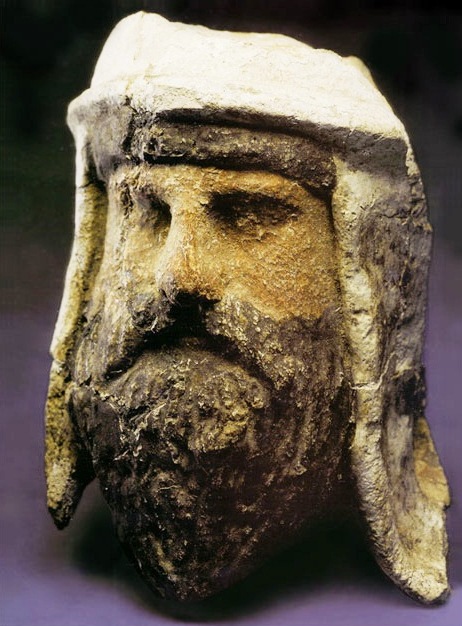
Painted clay and alabaster head of a Zoroastrian priest wearing a distinctive Bactrian-style headdress, Takhti-Sangin, Tajikistan, Greco-Bactrian kingdom, 3rd–2nd century BCE
Zoroastrianism or Mazdayasna is one of the world's oldest continuously practiced religions. It is a multi-tendency faith centered on a dualistic cosmology of good and evil and an eschatology predicting the ultimate conquest of evil with theological elements of henotheism, monotheism/monism, and polytheism.
Ascribed to the teachings of the Iranian-speaking spiritual leader Zoroaster (also known as Zarathushtra),it exalts an uncreated and benevolent deity of wisdom, Ahura Mazda (Wise Lord), as its supreme being.
Major features of Zoroastrianism, such as messianism, judgment after death, heaven and hell, and free will may have influenced other religious and philosophical systems, including Second Temple Judaism, Gnosticism, Greek philosophy, Christianity, Islam, the Bahá'í Faith, and Buddhism.
With possible roots dating back to the second millennium BCE, Zoroastrianism enters recorded history in the 5th century BCE.
Along with a Mithraic Median prototype and a Zurvanist Sassanid successor, it served as the state religion of the ancient Iranian empires for more than a millennium, from around 600 BCE to 650 CE. Zoroastrianism declined from the 7th century onwards following the Muslim conquest of Persia of 633–654.Recent estimates place the current number of Zoroastrians at around 110,000–120,000, with most living in India and in Iran; their number has been thought to be declining.
The most important texts of the religion are those of the Avesta, which includes as central the writings of Zoroaster known as the Gathas, enigmatic ritual poems that define the religion's precepts, which is within Yasna, the main worship service of modern Zoroastrianism. The religious philosophy of Zoroaster divided the early Iranian gods of the Proto-Indo-Iranian tradition into ahuras and daevas, the latter of which were not considered worthy of worship. Zoroaster proclaimed that Ahura Mazda was the supreme creator, the creative and sustaining force of the universe through Asha,and that human beings are given a right of choice between supporting Ahura Mazda or not, making them responsible for their choices. Though Ahura Mazda has no equal contesting force, Angra Mainyu (destructive spirit/mentality), whose forces are born from Aka Manah (evil thought), is considered the main adversarial force of the religion, standing against Spenta Mainyu (creative spirit/mentality). Middle Persian literature developed further Angra Mainyu into Ahriman and advancing him to be the direct adversary to Ahura Mazda.[
Asha (truth, cosmic order), the life force that originates from Ahura Mazda, stands in opposition to Druj (falsehood, deceit) and Ahura Mazda is considered to be all-good with no evil emanating from the deity.[Ahura Mazda works in gētīg (the visible material realm) and mēnōg (the invisible spiritual and mental realm) through the seven (six when excluding Spenta Mainyu) Amesha Spentas (direct emanations of Ahura Mazda) and the host of other Yazatas (literally meaning "worthy of worship"), who all worship Ahura Mazda in the Avesta and other texts and who Ahura Mazda requests worship towards in the same texts.
Cagliostro (Master Magician of Fraud) and Lorenza
The
most flagrant and flamboyant charlatan of the 18th Century was a self-styled
magician named Cagliostro (1743-1795).
Born Joseph Balsamo in Sicily of poor parents, this
uneducated peasant boy rose from abject poverty to fabulous riches. Many times
a millionaire, Cagliostro's obsessive pursuit of fame and fortune, however,
brought him only to a final destination—a dank prison cell where he died in
agony.
The boy lived in the squalor of Palermo where he
learned the techniques of pickpocketing and burglary. An unaccountable
curiosity led him to read. He studied mysticism, ancient cults, and
supernatural powers. To make his fortune, he decided to become an alchemist.
Alchemy was then a process of treating common metals with chemicals that would,
it was claimed, change them into silver or gold.
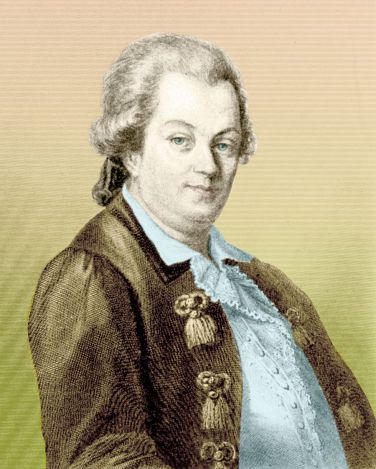
By the time he was seventeen, Balsamo had, through
trickery and guile, gained a considerable reputation as a successful alchemist
and medium. He swindled considerable gold from a goldsmith and fled to Messina
where he adopted the title of Count Alessandro di Cagliostro.
With his stolen gold, Cagliostro toured Africa and Asia. In Egypt, he studied the pyramids and became knowledgeable in the history of secret sects and their rites. From this, he organized a loose brotherhood, which he labeled Egyptian Masonry. At age twenty-three, Cagliostro sailed to the Mediterranean island of Malta where he met the powerful Pinto, grand master of the Order of the Knights of Malta, an organization that stemmed from the crusaders of 800 years earlier and was now a Masonic sect of great political influence.
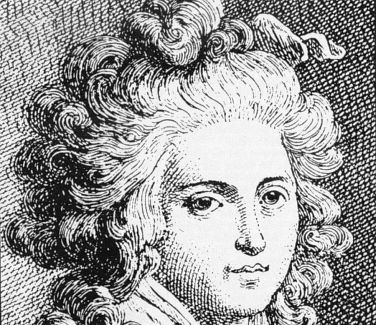 |
| Cagliostro's wife, Lorenza, an inventive partner in his confidence games; they were tried, convicted and imprisoned by the Inquisition. (image from the Jay Robert Nash Collection) |
Pinto was
impressed with the erudite and cunning Cagliostro, providing him with
considerable funds with which to travel to Italy as a sort of Masonic spy in
high places, sending back information to his mentor in Malta. In southern
Italy, Cagliostro established a lavish resort, which was little more than a
gambling casino. He traveled for some time, meeting the hypnotist, Franz Anton
Mesmer, creator of mesmerism, and learned how to hypnotize even the most
sophisticated person. (Mesmer, a charlatan of sorts himself, later denounced
Cagliostro as a fraud, a clear-cut case of the pot calling the kettle black.).
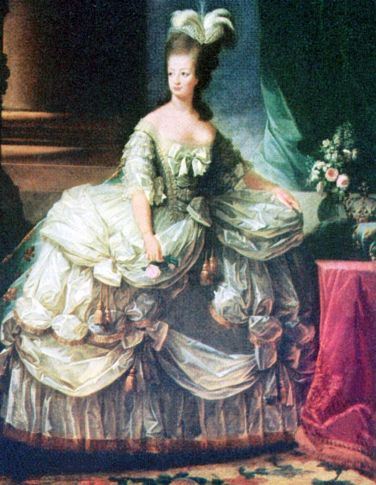 |
| Queen Marie Antoinette of France, who welcomed Cagliostro to her court, until he was suspected of masterminding the "Affair of the Necklace." (image from the Jay Robert Nash Collection) |
In Rome, Cagliostro met a beautiful young girl, Lorenza Feliciani.
They married and she joined him in his fabulous confidence swindles.
Establishing themselves in various Italian cities as nobles and renting huge
villas, Cagliostro and his wife cultivated the company of aristocrats and held
séances and demonstrations of his magical alchemy, where he supposedly changed
stones into rare gems and rope into strands of priceless silk. These
"miracles," of course, were nothing more than the magic tricks
Cagliostro had perfected over the years.
All during his travels through southern Europe, Cagliostro
continued to establish branches of his own sect of Egyptian Masonry and these
naive groups regularly sent him money to establish new chapters.
His ego bloated by his own impossible claims, Cagliostro insisted
that he could read into the future, perform acts of astounding wizardry, such
as bringing forth spirits. Cagliostro also claimed that he could heal all
manner of illnesses by laying his hands upon sick people and by pronouncing
secret oaths. Doubters were fearful of denouncing his frauds, however, since
they believed he might bring upon them death-enveloping curses.
"Remember," Cagliostro was fond of saying, "I can afflict as
well as heal!"
Enormous amounts of money began to flow into Cagliostro's coffers,
gifts, donations, and outright payments from the nobility for his cures, his
séances, his advice on matters of health, hygiene, and even sex. He became the
highest-paid oracle on earth. Coupled to this princely income were great gluts
of cash he received from the dozens of Masonic sects he had established in
Italy, Greece, Spain, and France.
He became a court favorite of King Louis XVI
and his tempestuous, beautiful queen, Marie Antoinette. In 1785, however, the
powerful Cagliostro was undone in the notorious Affair of the Diamond Necklace,
a colossal swindle that, ironically, had nothing to do with Cagliostro.
The Count of Saint Germain (1712-1784): The Immortal alchemist
The Comte de Saint Germain was a European courtier, with an interest in science and the arts. He achieved prominence in European high society of the mid-1700s. In order to deflect inquiries as to his origins, he would invent fantasies, such as that he was 500 years old, leadingVoltaire to sarcastically dub him "The Wonderman"
St Germain appeared in the French court in around 1748. In 1749 he was employed by Louis XV for diplomatic missions.
A mime and English comedian known as Mi'Lord Gower impersonated St-Germain in Paris salons. His stories were wilder than the real Count's — he had advised Jesus, for example. Inevitably, hearsay of his routine got confused with the original.
He predicted Marie-Antoinette's death.
Some of the St. Germain's most important work was done after 1784.
This fact is brought out in the Souvenirs de Marie-Antoinette, written by one of her ladies-in-waiting, the Countess d'Adhémar. This diary was started in 1760 and ended in 1821, one year before the death of the Countess, and a large part of it is concerned with St. Germain's efforts to avert the horrors of the French Revolution.
Early one Sunday morning in 1788 the Countess was surprised to receive a visit from the Count de St. Germain, whom she had not seen in several years. He warned her that a giant conspiracy was under foot, in which the Encyclopaedists would use the Duc de Chartres in an effort to overthrow the monarchy, and asked her to take him to the Queen. When Madame d'Adhémar reported the conversation to Marie-Antoinette, the Queen confessed that she also had received another communication from this mysterious stranger who had protected her with warnings from the day of her arrival in France.
On the following day St. Germain was admitted into the private apartments of the Queen. "Madame," he said to her, "for twenty years I was on intimate terms with the late King, who deigned to listen to me with kindness. He made use of my poor abilities on several occasions, and I do not think he regretted giving me his confidence."
After warning her of the serious condition of France, he asked her to communicate his message to the King and to request the King not to consult with Maurepas. But the King ignored the warning, and went directly to Maurepas, who immediately called upon Madame d'Adhémar. In the midst of the conversation St. Germain appeared. He confronted Maurepas with his treachery and said to him: "In opposing yourself to my seeing the monarch, you are losing the monarchy, for I have but a limited time to give to France. This time over, I shall not be seen here again, until after three successive generations have gone down to the grave,"
The second warning from St. Germain came on July 14, 1789, when the Queen was saying farewell to the Duchesse de Polignac.
She opened the letter and read: "My words have fallen on your ears in vain, and you have reached the period of which I informed you. All the Polignacs and their friends are doomed to death. The Comte d'Artois will perish."
MORE:
The count of St Germain : the immortal alchemist: http://www.ghostwoods.com/2009/10/the-comte-de-saint-germain-726/
Madame de Guéméné (1743 – 1807): Marie-Antoinette's friend in touch with ghosts and spirits
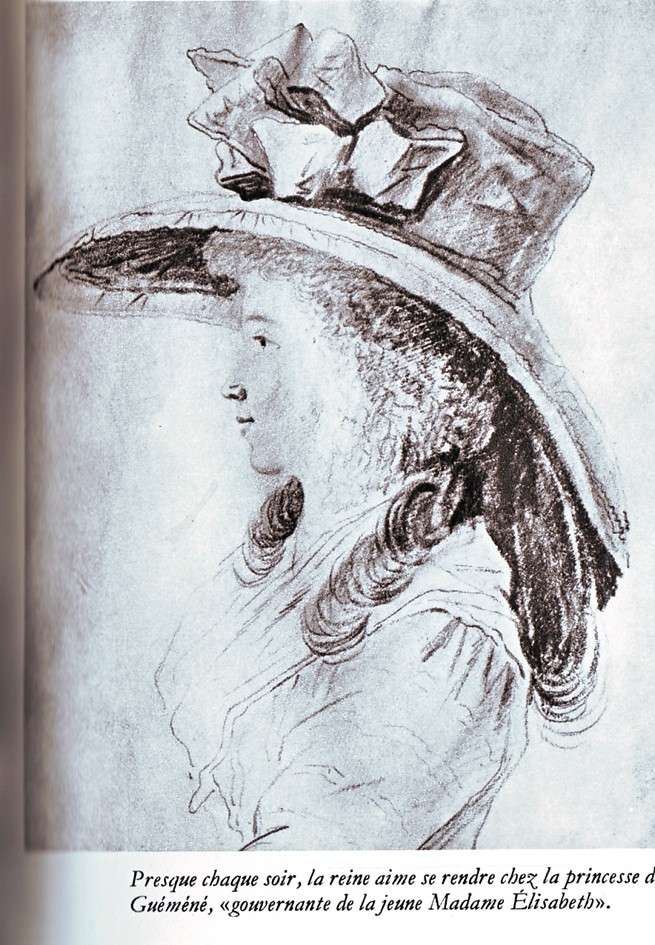
Victoire de Rohan, Princess of Guéméné was a French aristocrat who was the governess of the children of Louis XVI of France . She is known better as Madame de Guéméné.
Madame de Guéméné also was Marie-Antoinette's friend.
She received many people in her salon and they gamble till mornings.
She was a strange lady with interests in spirits and ghosts. She said she was in touch with spirits through the souls of her dogs.
She sometimes looked at her dogs, stopped talking and fell into a kind of transe.
Florimund Mercy, Count d'Argenteau (1727-1794): Marie-Antoinette mother's spy
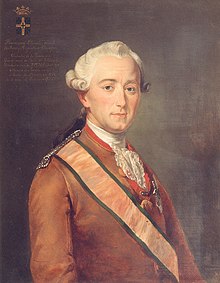
Florimund Mercy was an Austrian minister in Paris, and was used to strengthen the alliance of France and Austria. Mercy was one of Maria Theresa's closest ambassadors and used to spy on her and give all of the information to Maria Theresa.
MORE:
The XVIII th Century: The Age of Enlightenment
Science played an important role in Enlightenment discourse and thought.
Many Enlightenment writers and thinkers had backgrounds in the sciences and associated scientific advancement with the overthrow of religion and traditional authority in favour of the development of free speech and thought.
Scientific progress during the Enlightenment included:
- the discovery of carbon dioxide (fixed air) by the chemist Joseph Black, the argument for deep time by the geologist James Hutton,the invention of the steam engine by James Watt;
- significant advancements in the practice of medicine, mathematics, and physics; the development of biological taxonomy; a new understanding of magnetism and electricity; and the maturation of chemistry as a discipline, which established the foundations of modern chemistry.
The leaders of the Enlightenment included Freemasons such as Diderot, Montesquieu, Voltaire.
During the Age of Enlightenment, Freemasons comprised an international network of like-minded men, often meeting in secret in ritualistic programs at their lodges. They promoted the ideals of the Enlightenment, and helped diffuse these values across Britain and France and other places.
Jeanne de La Motte-Valois de St Remy (July 1756 – August 1791): An wonderful usurper
Jeanne was a con artist who called herself Jeanne de Saint-Rémy de Valois, a.k.a. Jeanne de la Motte, conceived a plan to use the necklace to gain wealth and possibly power and royal patronage. A descendant of an illegitimate son of Henry II of France, Jeanne had married an officer of the gendarmes, the soi-disant comte de la Motte, and was living on a small pension which the King had granted her.
She was ivolved in the Affair of the Diamond Necklace.
The Affair of the Diamond Necklace:;
Like most good scandals, this one involves a smattering of diamonds, a prostitute and forged correspondence. We'll begin with the diamonds.
Jewelers Böhmer and Bassenge nearly went broke creating a necklace that they presumed King Louis XV would buy for his mistress Madame du Barry. Weighing in at 2,800 carats, the jewelers thought they'd fetch 1.6 million livres for the stunner -- that's roughly equivalent to 100 million U.S. dollars in today's market. Unfortunately for Böhmer and Bassenge (and Madame du Barry), the king died before he could purchase it. They hoped that the new king, Louis XVI, might agree to buy the necklace for Marie Antoinette. Whatever frivolous reputation she may have acquired later in her reign, Marie Antoinette made a patriotic, sentient decision to discourage Louis from purchasing the necklace. She reasoned that he'd be better off putting the money toward France's navy [source: Muschamp].
The necklace languished in the jewelers' possession until a desperate, enterprising woman named Jeanne de Lamotte Valois devised a plot to pull herself out of debt by acquiring the necklace and selling it for parts.
The Comtesse de Lamotte appealed to Cardinal de Rohan, who was rather unpopular at court. From 1772 to '74, he'd served as the French ambassador to Vienna, where he became a quick enemy of Marie Antoinette's mother -- and of Marie Antoinette herself. The comtesse told the cardinal that Marie Antoinette desperately wanted the diamond necklace but that she didn't want to ask Louis for it. Lamotte slyly suggested that if Cardinal de Rohan could find a way to procure it for Marie Antoinette, his good reputation would be restored at court.

Cardinal de Rohan
Lamotte had her lover, Rétaux de Villette, write letters in Marie Antoinette's hand and send them to the cardinal, asking him to buy the necklace [source: Covington]. The comtesse even paid a prostitute who looked like the queen to have a secret tête-à-tête with the cardinal in the Versailles gardens one night. At last, the cardinal wrangled the diamonds from Böhmer and Bassenge on credit. The jewelers presented the necklace to the queen's footman for delivery -- only the footman was Rétaux in disguise. He seized the necklace and headed to London.
When his first payment was due, Cardinal de Rohan couldn't cough up the amount. The jewelers demanded money from Marie Antoinette, who had no knowledge of the necklace. By then, the necklace had been sold. A furious Louis had the cardinal arrested; later, he was acquitted of all charges and exiled. The scheming mastermind Lamotte was imprisoned but broke free and took up residence in England. There, she spread propaganda about the queen -- though she needn't have bothered.
Marie Antoinette's reputation (already hanging tenuously in the balance) was ruined. The scandal confirmed that she was, indeed, "Madame Déficit." The diamond necklace affair would be one of the final straws before the French Revolution and Marie Antoinette's death sentence.
But before her head rolled, the good times did. Next, we'll peek into her boudoir and investigate her affair with a Swedish soldier.
MORE:
Inscription à :
Articles (Atom)




